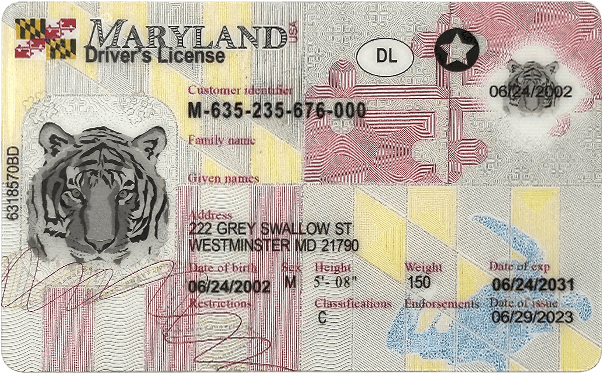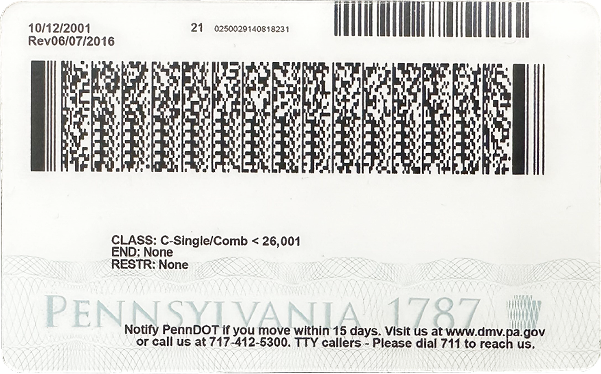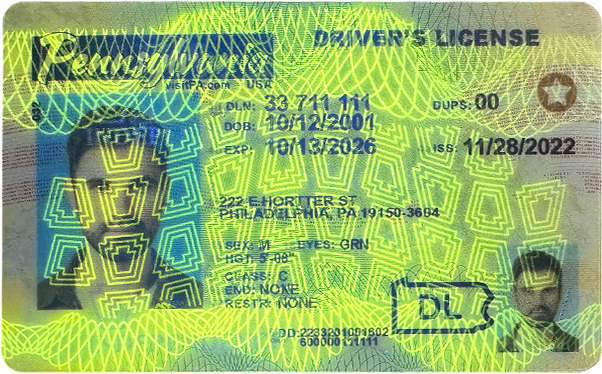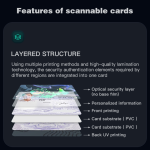Understanding Fake Driver’s Licenses
A fake driver’s license is a forged or counterfeit document that is made to appear as a legitimate driver’s license issued by the appropriate government – motor vehicle department. These fake licenses are often created for a variety of illegal purposes. Some individuals may attempt to obtain a fake driver’s license to bypass age – related restrictions, for example, underage people trying to purchase alcohol or enter clubs. However, a more sinister and widespread use of fake driver’s licenses is in the realm of identity theft.
The process of creating a fake driver’s license has become increasingly sophisticated in recent years. With the availability of advanced printing technology and access to templates and information on the dark web, criminals can produce fake licenses that are difficult to distinguish from the real ones at first glance. They can replicate the holograms, watermarks, and other security features that are supposed to be unique to official documents.
The Link to Identity Theft
Identity theft occurs when someone steals another person’s personal information, such as their name, date of birth, social security number, and driver’s license number, and uses it for illegal or fraudulent activities. A fake driver’s license can be a crucial tool in the identity – thief’s arsenal.

First, the thief may use the stolen identity information to create a fake driver’s license in the victim’s name. This fake license can then be used to access a wide range of services and resources. For instance, they can use it to rent a car. When renting a car, the rental company usually checks the driver’s license as a form of identification. A convincing fake driver’s license in the victim’s name can allow the thief to drive off with a rented vehicle, and the victim may later be held responsible for any damages or unpaid fees.
Another way a fake driver’s license is connected to identity theft is in financial fraud. Thieves can use the fake license to open bank accounts or credit cards in the victim’s name. Financial institutions often require some form of government – issued identification, and a fake driver’s license that looks real can pass as a valid ID during the account – opening process. Once the account is open, the thief can make unauthorized withdrawals, use the credit card for purchases, and leave the victim with a mountain of debt and a damaged credit score.

In addition, fake driver’s licenses can be used in the commission of other crimes. If a thief is stopped by law enforcement while using a fake driver’s license with a stolen identity, they can avoid being identified as the real perpetrator. This can lead to the innocent victim being wrongly accused or investigated for crimes they did not commit.
How Criminals Obtain Identity Information for Fake Driver’s Licenses
There are several methods that criminals use to obtain the necessary identity information for creating fake driver’s licenses. One common method is through data breaches. Large companies, government agencies, and even small businesses can be targets of hackers. When a data breach occurs, sensitive customer information, including driver’s license numbers, can be stolen. Hackers can then sell this information on the dark web, where it can be purchased by identity thieves for use in creating fake documents.
Phishing is another prevalent technique. Thieves send out fake emails or create fake websites that appear to be from legitimate sources such as banks, government agencies, or utility companies. They trick victims into providing their personal information, including driver’s license details, by posing as a trusted entity and asking for verification or account – related information. Once they have this information, they can use it to create fake driver’s licenses.

Some criminals also engage in dumpster – diving. They search through discarded documents, such as old bills, bank statements, or pre – approved credit card offers, to find personal information. If a person does not properly shred or dispose of documents containing their driver’s license number and other sensitive details, they are at risk of having their identity stolen for the creation of a fake driver’s license.
Impact on Victims
The impact of identity theft involving fake driver’s licenses on victims can be far – reaching and long – lasting. Financially, victims may find themselves dealing with unauthorized charges on their accounts, unpaid debts that they are now responsible for, and a damaged credit history. Rebuilding their credit can take years and may involve a lot of paperwork and communication with credit bureaus, financial institutions, and collection agencies.
Victims may also face legal issues. If a thief uses a fake driver’s license with their identity to commit a crime, the victim may be wrongly implicated. They may have to spend time and money dealing with legal proceedings, proving their innocence, and clearing their name. This can be a very stressful and time – consuming process.
On a personal level, the violation of privacy can be deeply distressing. Victims may feel a sense of violation and insecurity, knowing that someone has stolen their identity and used it for illegal purposes. It can also have an impact on their day – to – day life, as they may need to take extra precautions to protect their remaining personal information and avoid further identity theft.
Common Problems and Solutions
- Problem: Difficulty in Detecting Fake Driver’s Licenses
Many businesses and law – enforcement agencies may not have the proper training or tools to detect fake driver’s licenses accurately. This can lead to fake licenses being accepted as valid, allowing identity thieves to carry out their illegal activities.
Solution: Training programs should be implemented for employees in businesses that frequently check driver’s licenses, such as car rental agencies, bars, and banks. These programs should cover the various security features of real driver’s licenses and how to spot common signs of forgery. Law – enforcement agencies should also be equipped with advanced detection technologies, such as license – reading devices that can quickly verify the authenticity of a driver’s license.
- Problem: Lack of Awareness among the Public
Many people are not aware of the risks associated with identity theft and the role that fake driver’s licenses can play in it. They may not take proper precautions to protect their personal information, such as their driver’s license number.
Solution: Public awareness campaigns should be launched to educate people about identity theft and the importance of safeguarding their personal information. These campaigns can be carried out through various channels, including social media, community events, and public service announcements. People should be informed about the methods used by identity thieves to obtain information and how to protect themselves, such as shredding sensitive documents and being cautious when sharing personal information online.
- Problem: Data Breaches Compromising Identity Information
Data breaches at large organizations can result in the exposure of millions of people’s personal information, including driver’s license numbers. Once this information is in the hands of criminals, it can be used to create fake driver’s licenses.
Solution: Organizations need to implement strict data – security measures to protect customer information. This includes using encryption technology to protect data both in transit and at rest, conducting regular security audits, and training employees on data – security best practices. In the event of a data breach, organizations should have a clear and timely notification process to inform affected individuals so that they can take steps to protect their identities, such as monitoring their credit reports.
- Problem: Phishing Scams
Phishing scams are becoming more sophisticated, making it easier for identity thieves to trick people into giving away their personal information, which can be used for fake driver’s license creation.
Solution: People should be trained to recognize phishing attempts. They should be cautious of unsolicited emails or messages asking for personal information and should verify the authenticity of websites before entering any sensitive data. Email providers and internet service providers can also play a role by implementing spam – filtering technologies to block phishing emails and by providing users with tools to report phishing attempts.
- Problem: Difficulty in Recovering from Identity Theft
Victims of identity theft often face a long and complex process to recover from the damage caused. They may have to deal with multiple financial institutions, credit bureaus, and law – enforcement agencies, which can be overwhelming.
Solution: There should be a centralized system or resource for victims of identity theft to seek help. This could be a government – run agency or a non – profit organization that provides guidance and support throughout the recovery process. Financial institutions and credit bureaus should also have streamlined processes for handling identity – theft cases, making it easier for victims to dispute unauthorized transactions and correct their credit reports.
Fake ID Pricing
unit price: $109
| Order Quantity | Price Per Card |
|---|---|
| 2-3 | $89 |
| 4-9 | $69 |
| 10+ | $66 |



